From inside (document excerpt):
Commercial Products Lubrication Oils & Grease PART NO. 99040SL This page is intentionally blank. Lubricants – Oil and Grease Table of Contents 1 Oil 2 Biodegradable Oil 7 Grease . 10 Storage 12 Use of This Manual The information contained in this manual is supplementary to material found in other sources, it is not a replacement for them. You should always consult Service Manuals, Service Bulletins, Operator’s Manuals and Parts Books when necessary.
Lawn Mowing User Manual Free Download. Power Lawn Mower Free Instruction Manual Download PDF.
Service Manual Updates and Service Bulletins can be found on the internet at: www.toro.com/golf/custsvc.html This Manual and the training program, which it supports, are both designed to help you gain knowledge of the product, and to inform you of when and why to make the necessary repairs. We have also included tips for performing those repairs. This program is designed for you. Your input and participation is appreciated. There is plenty of space in this manual for you to add your own notes and observations TORO ® Service Training 2 Lubrication – Oil and Grease Lubrication is important to the long term life of the equipment. Lubrication Oils & Grease A thorough understanding of oils and greases will help you make the proper choices. Commercial Products Oil is Oil, Grease is Grease · A few things to consider. Automobiles use 30% of their available horsepower. Trucks use 60% of their available horsepower. Off road equipment uses 90% of their available horsepower. Off road equipment demands lubricants designed for heavy duty performance. Source : Viscosity Oil Company Turf equipment operates under more severe conditions then your average automobile or over the road truck. This means that the selection of lubricants is more important for this category of equipment then others. What Is Oil? · Roughly 85% of the oil is “Base Oil “. Often referred to as “Bright Stock “. · About 15% is the additives. This is what makes a hydraulic oil different from an engine oil. Hydraulic or Engine oil is made of roughly 85% base oil. This base oil is the same. The 15% of the oil that is the additives is what make the oil a hydraulic or engine oil. Source : Viscosity Oil Company TORO ® Service Training Lubricants – Oil and Grease 3 The typical additives to oil are rust inhibitors, oxidation inhibitors, anti-wear inhibitors etc. It is these additives that give the oil the required lubricating and service qualities to meet the requirements for the intended application. Typical Additives · Hydraulic Oil Rust Inhibitors Oxidation Inhibitors Anti-wear Anti-Foam Pour point Depressant · Engine oil Detergents Dispersants Corrosion Inhibitors Anti-wear · Zinc Dialkyldithiophospate Anti-Oxidant Anti-Foam Pour point Depressant Source : Viscosity Oil Company Lubricants can fail for a variety or reasons. Why does a lubricant fail to lubricate Oils lose their desired properties L u b r ic a n t P r o b l e m Why What Happens They can lose their ability to resist oxidation. This is caused when the additives to control oxidation are used up. This can be noticed by an increase of oil viscosity, deposits may form and/or acids may begin to corrode the metal parts. Rust inhibitors are used up and the metal is not protected from further rusting. The oil may lose its ability to protect the metal components from damage caused by heavy operational loads. The additives that keep contaminants in suspension can also be used up. Most of these additives are consumable additives. That means that in the course of doing their job they are consumed or depleted. Oxidation Control Rust Inhibition Inhibitors used up, stopping attack Oil Viscosity increases; deposits on oil and additives form.
Wikipedia’s page for Toro Company
Company Web Site: www.toro.com


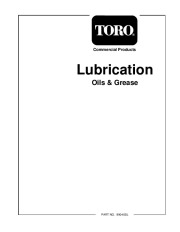 Toro Commercial Products Lubrication Oils Grease 99040SL Thistentionally Blank Lubricants - 1 of 16
Toro Commercial Products Lubrication Oils Grease 99040SL Thistentionally Blank Lubricants - 1 of 16 Toro Commercial Products Lubrication Oils Grease 99040SL Thistentionally Blank Lubricants - 2 of 16
Toro Commercial Products Lubrication Oils Grease 99040SL Thistentionally Blank Lubricants - 2 of 16 Toro Commercial Products Lubrication Oils Grease 99040SL Thistentionally Blank Lubricants - 3 of 16
Toro Commercial Products Lubrication Oils Grease 99040SL Thistentionally Blank Lubricants - 3 of 16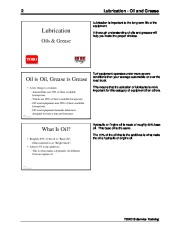 Toro Commercial Products Lubrication Oils Grease 99040SL Thistentionally Blank Lubricants - 4 of 16
Toro Commercial Products Lubrication Oils Grease 99040SL Thistentionally Blank Lubricants - 4 of 16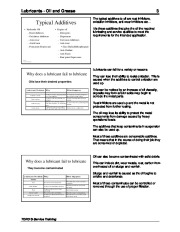 Toro Commercial Products Lubrication Oils Grease 99040SL Thistentionally Blank Lubricants - 5 of 16
Toro Commercial Products Lubrication Oils Grease 99040SL Thistentionally Blank Lubricants - 5 of 16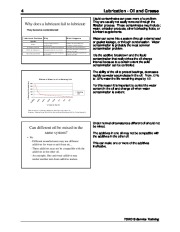 Toro Commercial Products Lubrication Oils Grease 99040SL Thistentionally Blank Lubricants - 6 of 16
Toro Commercial Products Lubrication Oils Grease 99040SL Thistentionally Blank Lubricants - 6 of 16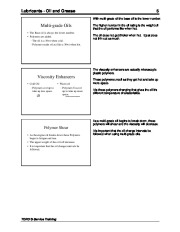 Toro Commercial Products Lubrication Oils Grease 99040SL Thistentionally Blank Lubricants - 7 of 16
Toro Commercial Products Lubrication Oils Grease 99040SL Thistentionally Blank Lubricants - 7 of 16 Toro Commercial Products Lubrication Oils Grease 99040SL Thistentionally Blank Lubricants - 8 of 16
Toro Commercial Products Lubrication Oils Grease 99040SL Thistentionally Blank Lubricants - 8 of 16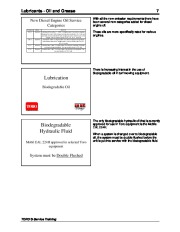 Toro Commercial Products Lubrication Oils Grease 99040SL Thistentionally Blank Lubricants - 9 of 16
Toro Commercial Products Lubrication Oils Grease 99040SL Thistentionally Blank Lubricants - 9 of 16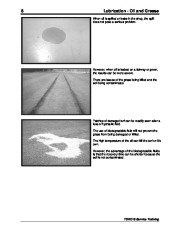 Toro Commercial Products Lubrication Oils Grease 99040SL Thistentionally Blank Lubricants - 10 of 16
Toro Commercial Products Lubrication Oils Grease 99040SL Thistentionally Blank Lubricants - 10 of 16